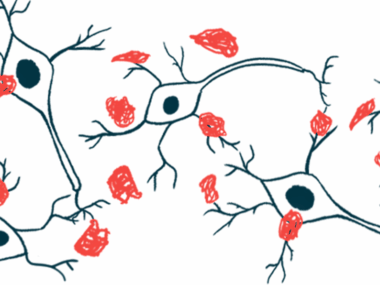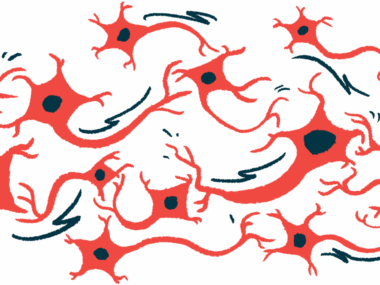Buildup of fat-like lipids may drive nerve cell loss in Parkinson’s
Affect ability of dopaminergic neurons to divide and grow, scientists say
Written by |

A buildup of fat-like lipid molecules may help to promote the inability of dopaminergic neurons, the nerve cells that are lost in people with Parkinson’s disease, to divide and grow as they should, researchers suggest.
Further understanding of the role of lipids in neurodegeneration “has the potential to open new avenues for potential intervention for a variety of devastating … disorders, such as [Parkinson’s],” they wrote.
Their position was explained in “Lipid accumulation drives cellular senescence in dopaminergic neurons,” published as a research perspective in the journal Aging.
GBA1, gene tied to Parkinson’s, encodes enzyme needed to break down lipids
Parkinson’s is caused by the death of dopaminergic neurons, the specialized nerve cells that produce dopamine, a signaling molecule that nerve cells use to communicate. The selective loss of these neurons results in well-known disease motor symptoms, including tremors, rigidity, and slow movements (bradykinesia).
While the exact causes of dopaminergic neuron loss are unknown, a combination of genetic and environmental factors is thought to be involved.
A hallmark of Parkinson’s is the buildup of alpha-synuclein protein clumps in dopaminergic neurons, which leads to the formation of larger aggregates known as Lewy bodies.
Research has shown that such aggregates alter the metabolism of lipids, fat-like substances involved in various biological processes. In the body, lipids are components of cell membranes, act as energy-storage molecules, and are chemical messengers.
One of the most common genetic risk factors for Parkinson’s is variants associated with the GBA1 gene. This gene encodes an enzyme in lysosomes, a cell’s recycling centers, that’s needed to break down lipids known as glucosylceramides. High levels of these lipids in the cerebrospinal fluid, surrounding the brain and spinal cord, of patients are linked with rapid cognitive decline.
Researchers at Stony Brook University, in New York, previously found that a reduction in GBA1 enzyme activity, and subsequent glucosylceramide buildup, promoted cellular senescence in dopaminergic neurons. Cellular senescence refers to a process whereby cells stop dividing and growing. (The two scientists writing this perspective were lead researchers in the earlier study.)
Enzyme’s buildup tied to senescence, lack of division and growth, in neurons
Glucosylceramide accumulation also triggered alpha-synuclein aggregation, further linking it to Parkinson’s. Overall, the scientists showed the glucosylceramide buildup was sufficient to induce a variety of key senescence markers in dopaminergic neurons, including the elevation of specific proteins, lysosome buildup, and the dysfunction of energy-producing mitochondria.
In line with these findings, both cell-based and animal models have shown that the accumulation of lipid droplets, where lipids are stored, increases alpha-synuclein aggregation, Lewy body formation, and cellular senescence, the scientists noted. Lipid droplet formation also has been directly linked to PLIN2, a protein produced in neurons and elevated in the aging brain and senescent dopaminergic neurons.
Given the connection between lipid droplets and alpha-synuclein aggregation, “it is plausible that there is an overlap between [Parkinson’s] driving pathways and age-related lysosomal dysfunction as well as neuronal senescence,” the researchers wrote.
Notably, using microscopic techniques, the team noticed many more lipid droplet-like structures in human senescent stem cell-derived dopaminergic neurons than in healthy cells. At the same time, there was a significant increase in PLIN2 in these cells, “suggesting an activation of the pathway driving [lipid droplet] formation,” the team wrote.
“Taken together, our data suggest a connection between age-related lysosomal impairment, lipid accumulation, and cellular senescence in [dopaminergic neurons] neurons that in turn drives [age-related inflammation] in the midbrain and ultimately leads to neurodegeneration and [Parkinson’s],” the scientists concluded.






